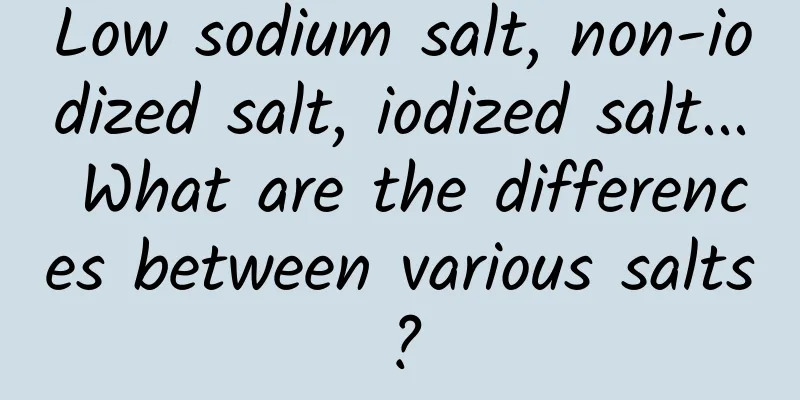This kind of thermos can turn hot water into "poisonous water", but some people still use it! Pay attention to these 6 points when buying a thermos

|
Many people like to drink hot water or warm water. It is a habit for many people to bring a thermos cup when going out so that they can drink hot water at any time. However, there are thousands of thermos cups on the market. If you accidentally buy a poor quality thermos cup, it may bring health risks. What kind of thermos cups cannot be used? Most thermos cups are made of stainless steel, which is resistant to high temperatures and has good heat preservation performance. Other materials such as glass, ceramics, purple sand, etc. are only a small part of the thermos cup army due to factors such as heat preservation, drop resistance and price. Stainless steel materials are usually divided into three types, and their "codes" are 201, 304 and 316. ① **201 stainless steel: **Most of the substandard thermos cups exposed in the news use 201 stainless steel as the inner liner of the thermos cup. Although 201 stainless steel is very cheap, it is not recommended to buy it. Because this 201 stainless steel is not a food grade material, it belongs to industrial product materials, and most of it is used to make decorative pipes, industrial pipes and watch straps, etc. 201 stainless steel has a high manganese content and poor corrosion resistance. If it is used as the liner of a thermos cup, long-term storage of acidic substances may cause manganese precipitation. Metallic manganese is an essential trace element for the human body, but excessive intake of manganese can harm the body, especially the nervous system. 304 stainless steel: Stainless steel in contact with food, its main safety hazard is the migration of heavy metals. Therefore, the stainless steel in contact with food must be food grade. The most commonly used food grade stainless steel is 304 stainless steel with good corrosion resistance. A survey found that some thermos cups on the market have inferior quality. They are marked as 304 material, but the merchants cut corners and use cheaper 201 material. The insulation is barely tolerable, but the heavy metal content is a big problem! 316 stainless steel: 304 stainless steel is more acid-resistant, but it is still prone to pitting corrosion when encountering substances containing chloride ions, such as salt solutions. 316 stainless steel is an advanced version: it adds metal molybdenum to 304 stainless steel, which makes it more corrosion-resistant and more "tough". Unfortunately, 316 stainless steel is expensive and is mostly used in high-tech fields such as medical and chemical industries. Therefore, when choosing a thermos cup, we recommend choosing stainless steel that meets safety standards and is marked with 304, 316 grade or "for food contact", which is more secure in terms of safety and corrosion resistance. Health Times data map Photo by Cao Zihao 6 points to remember when choosing a thermos cup 1. Purchase through formal channels and try to choose products from well-known brands. Consumers should check whether the instructions, labels and product certificates are complete when purchasing, and avoid purchasing "three-no products". 2. Check whether the product is marked with its material type and material composition, such as austenitic SUS304 stainless steel, SUS316 stainless steel or "stainless steel 06Cr19Ni10". ① 3. Open the thermos and smell it. If it is a qualified product, there will generally be no peculiar smell because the materials used are food grade. 4. Check whether the surface is smooth. A good thermos cup has a smooth lining, outer wall and cup mouth, without scratches, bumps, or welds. ② 5. Accessories that are easily exposed to liquids, such as sealing rings and straws, should be made of food-grade silicone. 6. After purchase, water leakage and heat preservation performance tests should be carried out first. Usually, the heat preservation time needs to be more than 6 hours. ① To judge the thermal insulation performance of a cup: Pour hot water into the cup, tighten the lid, and touch the cup with your hand after a few minutes. If there is no obvious feeling of heat, it means the thermal insulation performance is good. Test the tightness of the cup: fill the cup with water, tighten the lid, place it horizontally and upside down for a while to see if there is any water overflowing. If there is no overflow, it means that the cup is well sealed. ② 5 taboos for using thermos cups Carrying a thermos with you allows you to always have warm water or other drinks. This is a good idea, but you must remember that some drinks cannot be put into a thermos. 1. It is not suitable to store milk and soy milk. Milk and soy milk are both high-protein drinks and are easy to deteriorate if kept warm for a long time. Wang Weiguang, a nutritionist at the Nutrition Department of Zhejiang Hospital, once said in an article published in Health Times that putting hot milk in a thermos cup will allow the microorganisms in the milk to multiply rapidly at a suitable temperature, causing it to deteriorate and easily cause diarrhea and abdominal pain. In addition, when milk is exposed to high temperatures, nutrients such as vitamins will be destroyed, and the acid in the milk will also react chemically with the inner wall of the thermos cup, affecting human health. 2. It is not suitable to brew tea. Tea contains a large amount of tannic acid, caffeine, aromatic oil and multiple vitamins. It should only be brewed with water at about 80℃. If you use a thermos cup to make tea, the tea leaves will easily ferment under high temperature and constant temperature conditions, and the vitamins will be destroyed, the aromatic oil will volatilize, and tannic acid and theophylline will be leached out in large quantities, which will not only reduce the nutritional value of the tea, but also make the tea juice taste flavorless and bitter, thus increasing the amount of harmful substances in the tea. 3. It is not advisable to carry Chinese medicine. Nutritionist Wang Weiguang said that some people like to soak Chinese medicine in a thermos cup for easy carrying and drinking. However, a large amount of acidic substances are dissolved in the decocted Chinese medicine, which can easily react with the chemical substances contained in the inner wall of the thermos cup and dissolve into the decoction, causing adverse effects on the human body. 4. Do not soak sterculia lychnophora and red dates. For easily fermented ingredients such as sterculia lychnophora and red dates, if they are soaked in a thermos cup for a long time, they will easily ferment and produce gas, forming high pressure. When the cup lid is suddenly unscrewed, the huge pressure will rush to the top of the cup lid, and once it pops out and hits the head and face, it may cause injury. ④ 5. Do not store carbonated drinks and fruit juices. Carbonated drinks and fruit juices are mostly acidic. If they are kept in a thermos cup for a long time, it may corrode the stainless steel and heavy metals will migrate into the drinks. Moreover, when using a thermos cup to hold carbonated drinks and other gas-producing liquids, be careful not to put too much or too full, and avoid shaking it violently to prevent the dissolved gas from escaping. A sudden increase in pressure inside the cup can also create safety hazards. ① |
>>: Why does hyperuricemia favor boys over girls?
Recommend
The harm of precocious puberty in girls
In daily life, many girls will experience precoci...
What kind of exercise can girls do to grow taller?
A beautiful lady is a gentleman's dream. Tall...
How many times can a caesarean section be performed?
Caesarean section is very harmful to the uterus. ...
Pregnancy symptoms one week after ovulation
Anyone with a little common sense knows that the ...
Five successful caesarean sections
If a woman does not have any obvious physical pro...
What does HMG mean?
Many people are not clear about what HMG is. What...
Why are my nipples always itchy?
Itchy nipples are generally normal, such as irrit...
If the fruit is moldy and rotten, can I still eat it after cutting off the rotten part?
Can we still eat rotten fruit? Some people think ...
Causes and treatments of brown menstrual period
Every woman will have menstruation. Some women, b...
What are the clinical manifestations of hydrosalpinx?
Many women will experience hydrosalpinx, but beca...
Causes of low free thyroxine in pregnant women
After pregnancy, this is mainly due to changes in...
When should I use loose powder? What is the difference between setting powder and loose powder?
Loose powder is a type of facial cosmetics. Its p...
What is the cause of bilateral fallopian tube adhesions?
Adhesion of both fallopian tubes will directly af...
Is it normal to have your period a week early?
Early or delayed menstruation is a symptom of irr...
Can I have sex when my period is coming?
It is common sense that everyone should know, esp...









